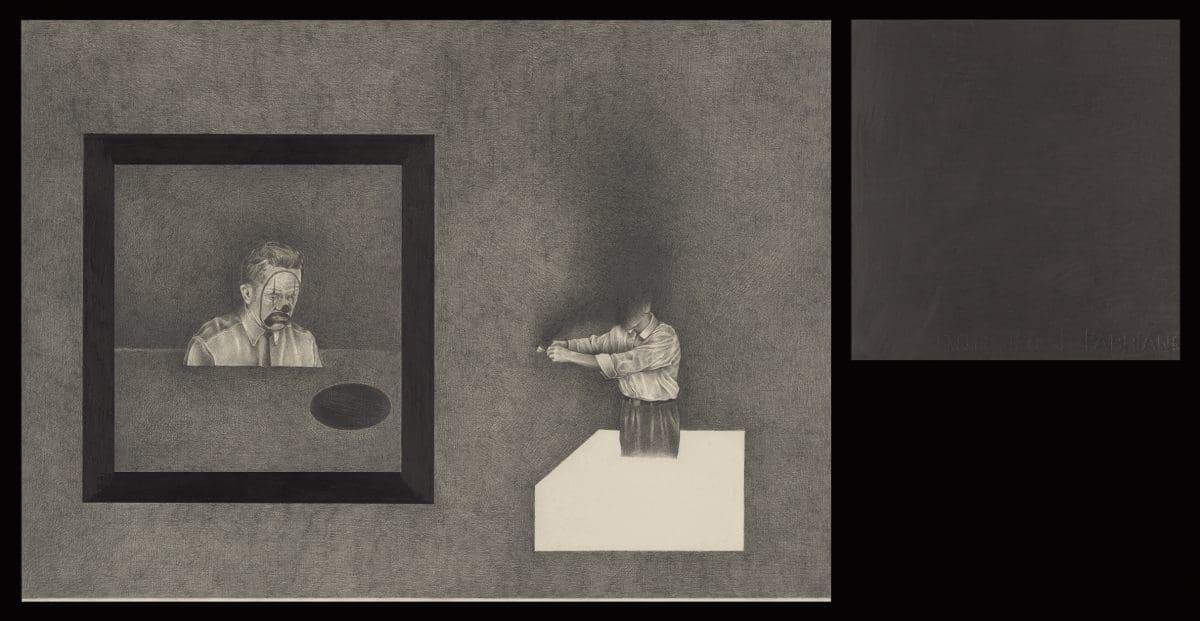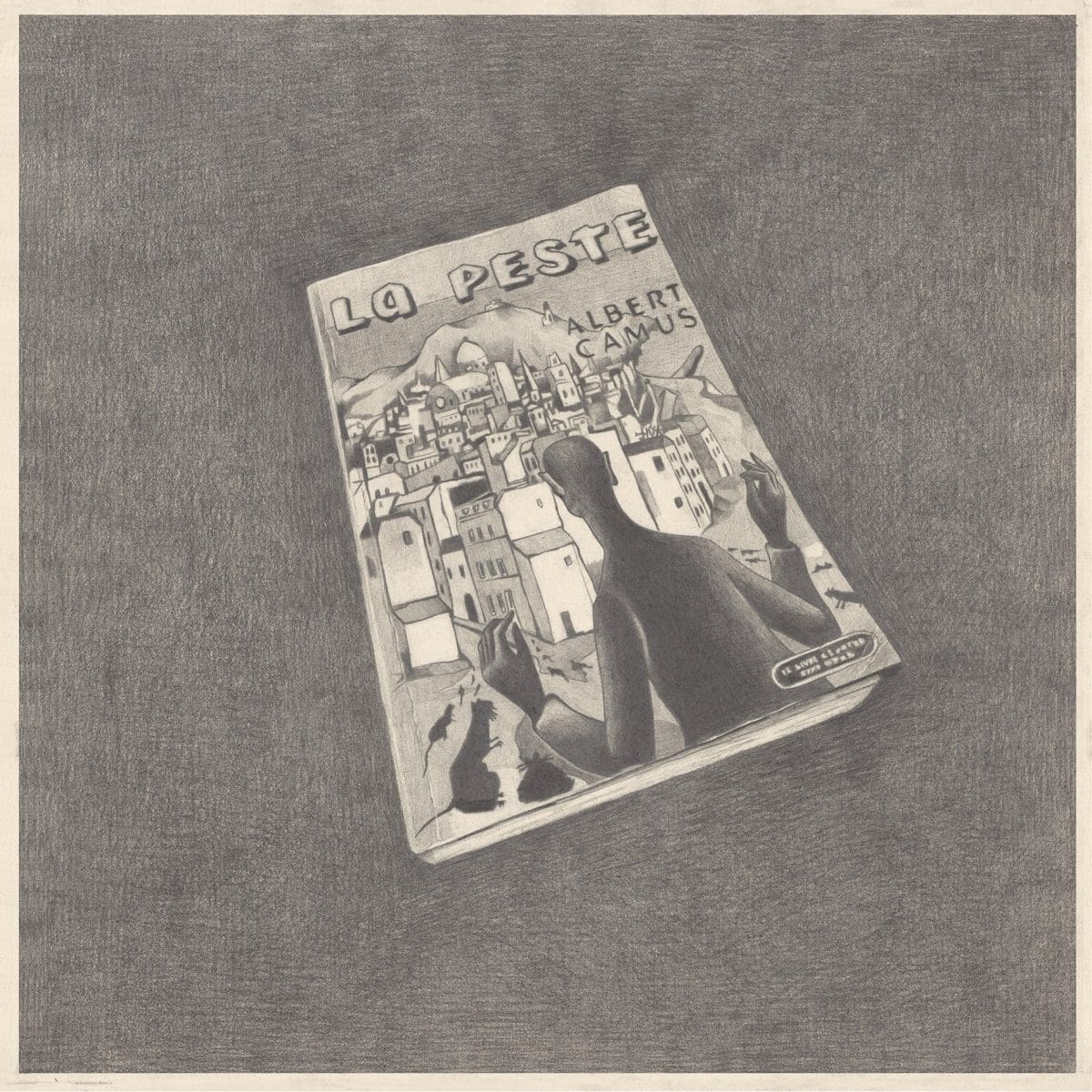
Piercing the veil
A new exhibition at Buxton Contemporary finds a rich complexity in the shadowy terrain between life and death.

Teo Treloar, Illustrations for a comic strip about the absurd (I’m just another clown), graphite pencil on 640gsm fabriano artistico hot pressed paper, black mount board, 2022.

Teo Treloar, The Plague (Penguin Books Edition) Australia, graphite pencil on 640gsm fabriano artistico hot pressed paper, 31 x 31 CM, 2022.

Teo Treloar, The Plague, (Hamish Hamilton Edition) London, graphite pencil on 640gsm fabriano artistico hot pressed paper, 31 x 31 CM, 2022.

Teo Treloar, The Plague (Modern Library College Edition) New York, graphite pencil on 640gsm fabriano artistico hot pressed paper, 31 x 31 CM, 2022.

Teo Treloar, The Plague, (Gallimard Edition) France, graphite pencil on 640gsm fabriano artistico hot pressed paper, 31 x 31 CM, 2022.
In early 2020, just before Covid-19 hit globally, Teo Treloar went on a research trip to New York to observe 17th-century Dutch etchings. On the journey home, he noticed people had started to mask up. “It was like a Hollywood horror movie,” he says. The previous year, he had read Albert Camus’s The Plague, where an epidemic infects a French Algerian city—“It’s a tough read, it isn’t fun.” Treloar knew the possible trajectory.
Shortly after returning to Australia, Treloar’s project evolved to focus on The Plague. He searched for as many different editions of the book as possible and, on receiving them, would create detailed drawings of the covers. The exhibiting results extend Treloar’s interests around impermanence, the absurd, and existentialist philosophy.
“The interesting thing with The Plague is that it has been written about and talked about so much, it is hard to read it without all the commentary that comes along with it,” says Treloar. “It is full of allegory about the Nazi occupation of Paris and also the French occupation of Algiers, but I think an interesting subtext that has come up during the recent pandemic is that, in essence, all humans can actually be interpreted as being the plague.”
Finding different editions of The Plague has remained an obsession. Treloar has acquired about 35 singular versions so far, but during the height of border closures and lockdowns, some went missing in the post, including a $350 first edition. “That doesn’t really matter,” he says. “What is important is that the books are not only interesting as aesthetic objects, but that they have passed through the hands of others: they have been read and come from countries that have experienced different impacts from the pandemic. That connects us all.”
And Now, The Plague
Teo Treloar
Olsen Gallery
30 November—17 December
This article was originally published in the November/December 2022 print edition of Art Guide Australia.